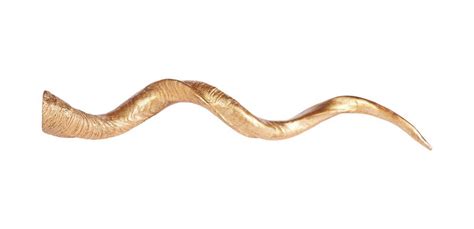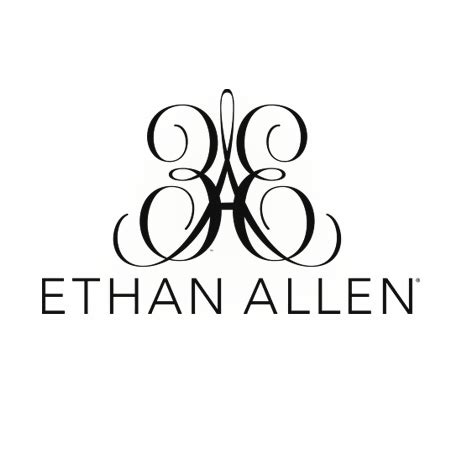What is Ethan Allen Kudu Horn Sculpture?
Ethan Allen is a renowned sculptor and his Kudu Horn Sculpture is one of his most popular and impressive works of art. This sculpture, crafted from real Kudu horns, is an exquisite piece that draws attention with its unique design and intricate details.
The Kudu Horn Sculpture is a masterpiece of craftsmanship that features a set of Kudu horns mounted on an elegant wooden base. The horns are intricately carved and polished, giving them a remarkable shine and texture. Their natural curves and ridges add to the sculpture's beauty and showcase the stunning symmetry and pattern of the horns.
Ethan Allen meticulously crafted this sculpture, paying close attention to the details of the horns. The texture of the horns is beautifully preserved, and their curves are gracefully complemented by the flowing wooden base. The sculpture has an overall rustic and earthy feel, and its textured surface gives it a tactile quality that draws people to touch and feel it.
The Kudu Horn Sculpture is not only visually stunning but also has a symbolic significance. Kudu horns are viewed as a symbol of power, strength, and stability in many cultures. Ethan Allen's sculpture combines these attributes with his expertise and creativity, creating a masterpiece that is both inspiring and beautiful. It is a testament to his skill as a sculptor and his ability to create works of art that are both aesthetic and meaningful.
Overall, Ethan Allen's Kudu Horn Sculpture is a remarkable work of art that captures the essence of beauty, power, and tradition. Its intricate details and natural beauty make it a captivating piece that's sure to impress anyone who sees it.
Frequently Asked Questions about ethan allen kudu horn sculpture
A kudu horn is a musical instrument made from the horn of the kudu.
In Southern Africa musicians play a horn from a kudu/antelope like a trumpet, making sounds that blare and buzz. The kudu horn is the ancestor of the loud, buzzing South African vuvuzela and is reminiscent of the Jewish ritual ram's horn known as a shofar.
Method of Playing
The varying sizes of the horn changes how high or how low the pitch will be. In order to change the pitch while playing, the player must adjust their lips. Just like a trumpet player tightens or loosens their lips to change the pitch, someone playing the Kudu Horn must do the same thing.
The most distinct feature of kudu horn is their shape. Male kudu antelopes grow long spiraling horns with a sleek surface that artisans can paint and carve.
These horns come from the Kudu antelope. They are ethically and sustainably sourced from South Africa. The horns are removed from their outer shell to reveal the white inner horn. Each horn will vary slightly and natural markings or colour pigments may occur.
Horns are composed of a bony core covered with a sheath of keratin. Unlike antlers, horns are never branched, but they do vary from species to species in shape and size. The growth of horns is completely different from that of antlers.
brass
Although their early ancestors are known to have been made of wood, tusks, animal horns or shells, today's modern instruments are made entirely of brass. Brass instruments are essentially very long pipes that widen at their ends into a bell-like shape.
History and development of the horn
The horn can be traced back to 16th-century hunting horns, which were used by hunters in France and Germany. Hunting horns were large round hoops of tubing that the hunter could put his arm through and carry on his shoulder to blow through while riding.
The horn is a mid-range brass instrument that has the widest tonal range of all brass instruments. The extremely rich, soft timbre gives it a special quality half-way between brass and woodwinds, and in harmonies, it blends well with the timbres of many other instruments.
Horns occur in males of all species of Bovidae, and females often bear them too. Horns are composed of a bony core covered with a sheath of keratin. Unlike antlers, horns are never branched, but they do vary from species to species in shape and size.
History and development of the horn
The horn can be traced back to 16th-century hunting horns, which were used by hunters in France and Germany. Hunting horns were large round hoops of tubing that the hunter could put his arm through and carry on his shoulder to blow through while riding.
Both kudu animal species are native to southern and eastern portions of Africa. Greater kudu have a much greater geographic distribution that includes parts of Ethiopia, Tanzania, Kenya and as far south as South Africa. There are also some isolated populations of the cottoni subspecies found in central Africa.
Animals use their horns to defend against predators. If an animal's horn is broken or damaged, it will remain that way forever. It does not grow back. Horns are permanent; they are not shed, but grow with the animal throughout its lifespan.
Animals have a variety of uses for horns and antlers, including defending themselves from predators and fighting members of their own species (horn fighting) for territory, dominance or mating priority. Horns are usually present only in males but in some species, females too may possess horns.














